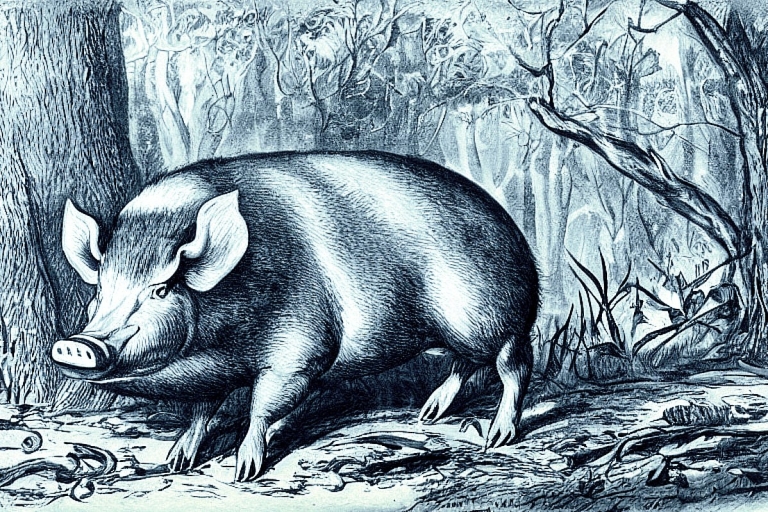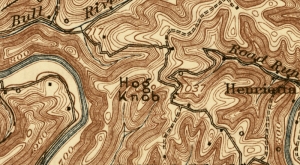
GRANTSVILLE, W.Va. — Occasionally, you might hear old-timers speak of a time when herds of wild hogs were hunted in the West Virginia hills. Chances are, they never witnessed such a hunt, as the practice was a tradition so long ago that they likely heard of it from their grandparents.
These hunts would have been undertaken in the 18th and 19th centuries, before the arrival of railroads, when the food store could grow scarce in winter, especially in the state's interior, far from river transportation.

The hogs, or swine, were, apparently, non-native and had been brought to the region by early settlers, who allowed them to run wild in the woods. There, the swine feasted and fattened until they could provide enough pork for remote settlements without requiring much effort from the pioneers.
They were customarily hunted in late autumn, as settlers had discovered that the meat tasted better when the animals had been eating chestnuts and white-oak acorns. Later, when only red oak acorns were available, their meat tasted overly strong.
Older hogs were so vicious that few hunters dared venture near their feeding grounds to take them. Instead, mass hunts were organized. When temperatures began to fall, the hogs would nest in the brush surrounding an open space, sleeping on leaves and holing up during severe winter weather. They would defend their nests to the extent that some say even a bear was in danger if it attempted to kill a hog near its nest.
The hunts were conducted after scouts had observed the hogs to be denned. The hunters would open a trail through the forest that led away from the entrance to the den area and circle around so that their quarry would be led past the hunters a second time if enough animals were not killed on a first volley.
Riflemen then took up positions along the route, standing on protected logs and boulders where they might be safe from an attack by the herd. One hunter would then ride into the den on a horse, driving the pigs out, and sending them in the direction of the hunters, who would kill as many as were required.
After the desired number were slaughtered, the hunters would wait until the remainder returned to their shelter, lashing a thong about each pig's tusk and tying it to a horse's tail. The animals were then pulled over the snow to an area nearby that had been set up for butchering.
The practice flourished during pioneer days when acquiring food for winter was a dire necessity. Few, if any, wild hogs now roam the hills—at least not in herds—though Eurasian wild boar now roam isolated parts of Boone, Logan, Raleigh, and Wyoming counties, where they were imported by wildlife officials in 1971.
According to the West Virginia Division of Natural Resources, only a few small groups of wild swine are scattered across the state.
Read also: Winter's chill recalls the legend of Braxton County Bear Hunter
Sign up for a FREE copy of West Virginia Explorer Magazine in your email twice weekly. Sign me up!






























